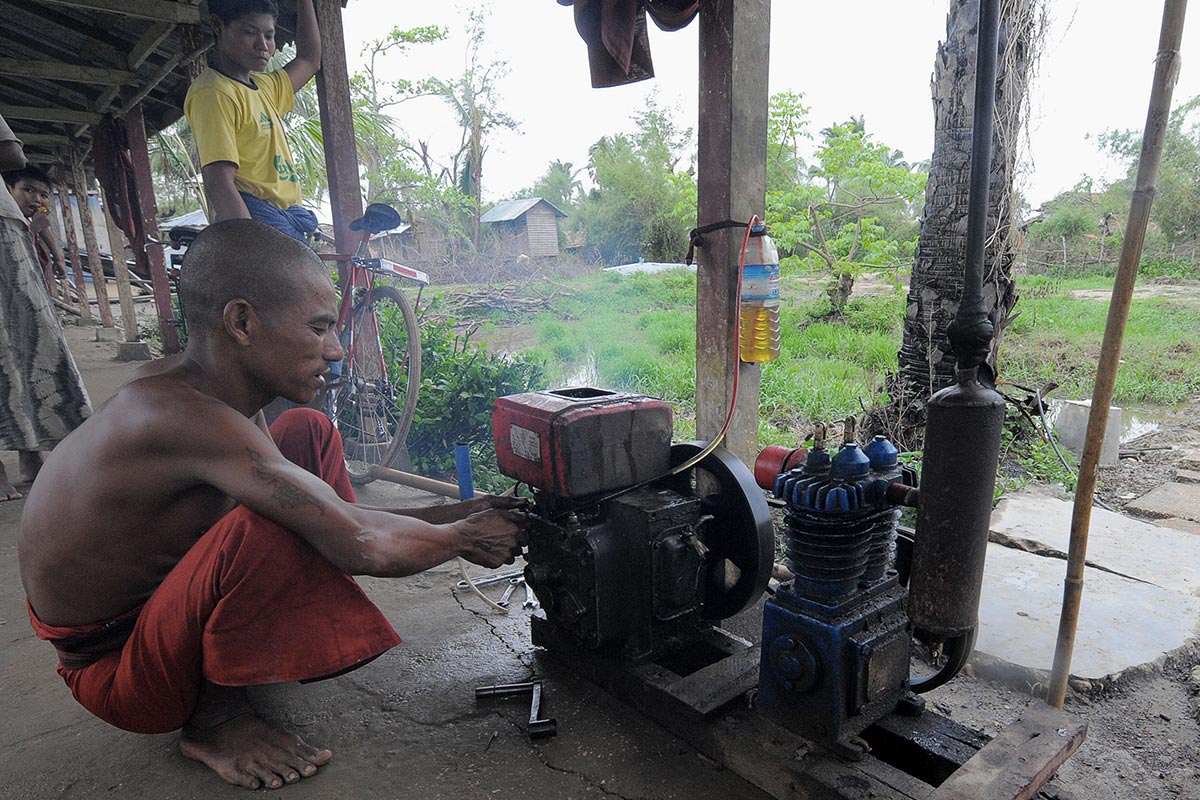More than 300 million people in India lack access to electricity, while in Sub-Saharan Africa, twice that many live without power. With population growth forecast to exceed connection rates, “energy poverty” is expected to worsen before it improves.
For decades, rural communities in frontier economies have waited in vain for government-supplied electricity to arrive. But today, new technologies – coupled with cheaper solar panels, better batteries, and mobile payment systems – are changing how power is produced and distributed. With so-called “mini-grids” – smaller, localized power utilities – independent producers can electrify remote communities faster and more cheaply than traditional utilities can. The challenge is convincing politicians, financiers, and vested interests of the value in going decentralized.
Tackling rural electrification with mini-grids is not a new idea; communities from the United States to Cambodia have long used this approach to weave local infrastructure into regional or national grids. And for energy-starved communities, mini-grids are a potential game changer. According to the International Energy Agency (IEA), decentralized solutions such as mini-grids are the most cost-effective option to deliver electricity to more than 70 percent of the unconnected, provided that projects can attract new sources of capital. With US$300 billion in investment and supportive policies, the IEA says, mini-grids could serve 450 million people by 2030.
To be sure, mini-grids are not meant to operate in isolation for perpetuity; they are at their best when feeding power into larger distribution networks. But until larger grids arrive, rural areas in developing countries can, and should, go it alone.
Simply put, compared to main-grid solutions, mini-grids are easier to assemble and deploy in hard-to-reach communities and deliver electricity more reliably. By powering health clinics, schools, and local businesses, including in the agriculture industry, such grids would help create more vibrant and prosperous local economies. In unelectrified areas that are vulnerable to climate change, natural disasters, and economic migration, mini-grids are often the only option.
Unfortunately, despite these advantages, mini-grid power in India and Sub-Saharan Africa remains underused. For example, Smart Power India, with support from the Rockefeller Foundation, has helped to build over 140 (and counting) privately owned mini-grids across the country, representing the largest cluster of local generating capacity anywhere in India. And yet this is just a tiny fraction of the number of mini-grid systems (estimated at 100,000 to 200,000 in Africa alone) needed to meet projected demand over the next few years.
African communities are facing similar shortfalls. In April, the industry’s first trade organization, the Africa Mini-grid Developers Association, was established to spur the growth of mini-grids in Kenya and Tanzania, and eventually all of Sub-Saharan Africa. By 2020, the number of renewable mini-grid connections in these two countries is expected to climb from 12,000 to more than 145,000. Still, relative to Africa’s massive energy needs, these are modest gains. In Nigeria, for example, 80 million people have no access to electricity, and another 60 million spend US$13 billion annually to run polluting diesel generators, which could be displaced by mini-grids. Many other African countries are facing similar energy-related issues.
The good news is that funding for mini-grids – including those powered by solar, hydroelectric, wind, or a mix of renewables and diesel – is slowly increasing. In India, two mini-grid developers, Husk Power Systems and OMC Power, recently secured a total of US$30 million in new investments, while Yoma Micro Power netted US$28 million. In Africa, meanwhile, the World Bank has loaned Nigeria US$350 million for rural electrification, while the International Solar Alliance is expected to secure a US$2 billion line of credit from India to support projects in Africa, including mini-grids. These commitments come after Deutsche Bank announced a US$3.5 billion fund in 2016 to help finance sustainable energy projects in Africa, including 10,500 solar mini-grids systems.
Additional financing will likely be secured as mini-grid designs and business models mature. One promising innovation is a “utility in a box” system – a modular, scalable mini-grid solution that is currently being field-tested in India and elsewhere.
Despite these positive developments, however, mini-grids’ full potential to lay the foundation for rural economic development will remain unrealized until politicians, regulators, and international development practitioners embrace decentralized grids as viable, complementary, and inter-operable solutions to energy poverty, rather than sources of competition for traditional power utilities.
While a growing number of governments are adopting mini-grid policies, most are still failing to integrate localized generation and distribution into national electrification planning. In India, for example, a draft mini-grid policy has languished for two years, while in Sub-Saharan Africa, good intentions are often derailed by bureaucracy and lobbying from big power companies. Rural mini-grids are often required to operate without the financial backing that larger utilities regularly receive, despite providing equivalent or better service.
To turn the power on in India, Africa, and beyond, small energy producers need access to capital, and the support of policies that are impartial and fair. But, more than anything, they need the opportunity to put their technologies to work. The world already knows how to power rural communities; it’s up to politicians to flip the switch.
Jessica Stephens is Global Coordinator for the Africa Mini-grid Developers Association. Sidhartha Vermani is Senior Director at Smart Power India.
